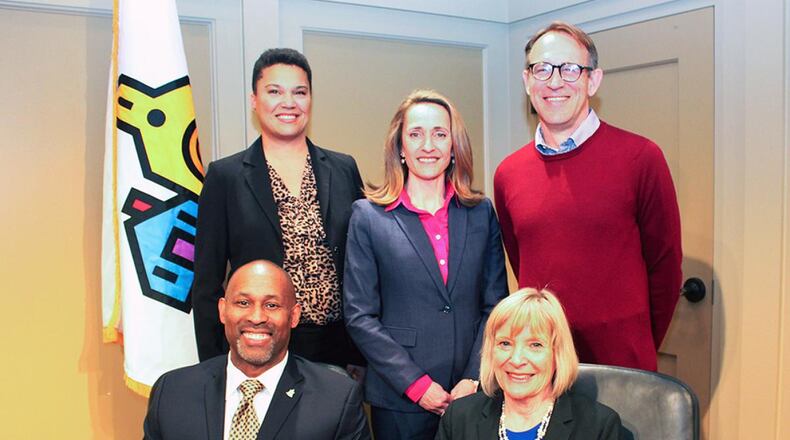Earlier this week Decatur’s commission approved a 73-page report submitted by the Decatur Affordable Housing Task Force, a document that took eight months to assemble according to group Chair Elke Davidson. The intricately detailed statement offers five major goals, each with numerous sub goals or recommendations.
“It’s important to understand,” Mayor Patti Garrett said, “we are not implementing this plan. But it is a guide for us, and probably will be for a long time.”
One of the report’s significant achievements is defining “affordable housing,” relating to Decatur. “The Task Force recommends,” it says, “that Decatur target [its] policies, programs and investment strategies to serve residents living from 30-120% [of the Area Median Income].”
The report specifically defines residents eligible for “affordable housing’ as those with an annual income ranging from 30 percent to 60 percent of the AMI, which translates to $25,750 to $47,820 for a family of four. Residents eligible for “workforce housing” are those with an annual income of 60% to 120% of the AMI, translating to $47,820 to $95,640 for a family of four.
According to the report Decatur’s AMI is $92,263, but the above definition is based on the metro Atlanta AMI of $79,700.
Even before this report’s submittal, the city began pursuing two of its most insistent recommendations.
According to City Manager Andrea Arnold the city is researching the possibility of creating an inclusionary housing ordinance, while it’s also close to carving out a two-year fellowship position for a staffer dedicated to executing affordable housing strategies.
Inclusionary housing requires a certain percentage of new construction getting set aside for affordable and workforce units.
“We do have a voluntary program,” Arnold said, “where we provide developers with a density bonus if they set aside a percentage for affordable housing. But so far developers aren’t motivated by that.”
Other major recommendations from the 26-person task force include:
• Developing 63 “affordable” units per year for residents between 30 and 60 percent AMI over 10 years.
• Developing 97 “workforce” units per year for residents between 60 and 120 percent AMI over 10 years
• Preserving 933 existing affordable and workforce units and 518 existing Decatur Housing Authority properties that fall mostly in the “affordable” category.
About the Author
Keep Reading
The Latest
Featured

